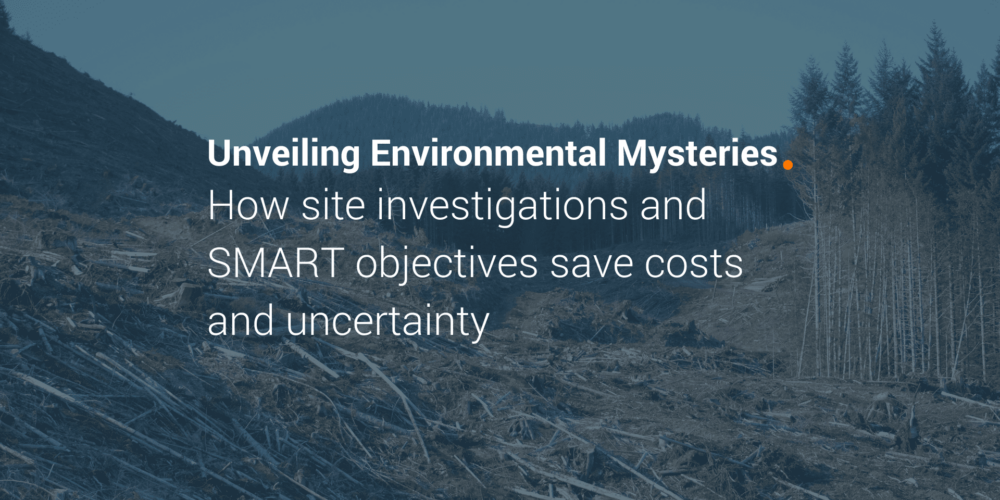
Let’s hear it for desk studies!
#TLDR Site investigations resolve uncertainty in the conceptual site model. Time spent understanding site history reduces uncertainty and investigation costs. Investigations should be fully justified – WHY is that borehole, sample or analysis needed?
House MD’s Diagnostic Process: Environmental Clues
What do YOU binge watch? My indulgence over the past year or so has been House MD – I am currently on season 6 of 8. The plot is formulaic, but with 177 episodes airing between 2004 and 2012 that is hardly surprising. The opening sequence sets out the medical conundrum that Dr Gregory House (Hugh Laurie) and his crack team of diagnosticians has to solve in time to save their patient.
What struck me is how many of the conundrums have an environmental cause – be it lead, arsenic or mould. The patient history not only helps the doctors prepare their patient for what’s coming but also gives clues about what’s poisoning their body. The inspection of the patient’s home or work place – always by two doctors wearing gloves and occasionally a face mask – provides evidence of chemicals under the sink, mouldy paint or bird droppings in the play sand.
House has a system and works through it methodically, and to great effect. Just like a… land contamination risk assessor.
Preliminary risk assessments (PRA) are a required part of the Land Contamination Risk Management (LCRM) process. By the way, LCRM the July updates strengthened the need to consider extreme weather events and climate change. A PRA involves reviewing the documentary history of how a site has been used, carrying out a site visit and interviewing past or current users of the site. You can see the echoes with Gregory House’s approach.
The outcome of House’s deliberations is either a diagnosis followed by a prescribed treatment or to commission routine or specialist tests to confirm or eliminate possible illnesses. The outcome of a PRA could be to move to remediation or to a conclusion that further work is not required, but usually is followed by sampling and analysis of soil, water and gas samples.
House’s response to a new case is excitement – the thrill of the challenge of diagnosis. As the case proceeds he focuses on putting together all the lines of evidence until the crescendo light bulb moment when it all falls into place.
Envirocheck Professional: Uncovering the Treasure Trove
The excitement that accompanies opening the email with the link to the Envirocheck Professional treasure trove of historical mapping, regulatory information, environmental setting isn’t usually captured by the camera. But it is there. And it too needs to be followed by the detailed examination of all the evidence – including from the site visit and any interviews – to build up the understanding of the site and to identify what we need to know but don’t yet know.
The outcome of the PRA is captured in the conceptual site model. A CSM captures what we know and don’t know about the geology, nature of contamination sources, presence of effective pathways, the types of receptors and how these elements all relate to each other. Resolving these uncertainties are the SMART objectives – specific, measurable, achievable, realistic, time-bound – that inform the design of the follow-on sampling and analysis.
Time spent in understanding the site history helps reduce uncertainty, target the follow-on site investigation and keep costs down to what is needed. Every location, sample and analysis built into the site investigation should be justifiable. WHY – is that borehole, sample or analysis needed? Why should that borehole go there, that sample be taken or that analysis carried out? If these questions cannot be answered then perhaps the borehole /sample /analysis is not really needed at all.
The cost of a PRA will have three ‘0’s, an intrusive investigation will have four ‘0’s while a full remediation can run into the 100s of thousands or more. So, getting the desk study right, pays off.
Paul Nathanail writes in his personal capacity
Expert Insights and Further Reading
Setting SMART Objectives Checklist 231, Chartered Management Institute for UK Civil Service
Client Guide: The Purpose and Use of a Ground Condition ‘Desk Study’, Association of Geotechnical and Geoenvironmental Specialists
Engineering Geological Models for contaminated land, in IAEG COMMISSION 25 PUBLICATION NO. 1 Guidelines for the development and application of engineering geological models on projects
